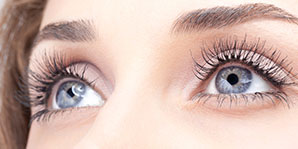The Cause And Cure For Ptosis (Droopy Eyelid)
 Ptosis is an odd word with a simple definition. Ptosis is the medical term for a drooping eyelid. It refers only to the upper eyelid, and if severe enough droopy eyelid can affect the sufferer’s eyesight. Dr. Shams is an expert in diagnosing and, if necessary, surgically repairing the eyelid to restore it to its normal postition.
Ptosis is an odd word with a simple definition. Ptosis is the medical term for a drooping eyelid. It refers only to the upper eyelid, and if severe enough droopy eyelid can affect the sufferer’s eyesight. Dr. Shams is an expert in diagnosing and, if necessary, surgically repairing the eyelid to restore it to its normal postition.
The causes
The are many causes if ptosis because the area involves the muscles, nerves, and the skin of the eyelids. The muscles involved are called levator muscles (think elevator) and Mullers muscle; they allow the eyelids to move up and down. They can weaken with age or due to injury. Congenitally, some people are born with weaker-than-normal eye muscles giving them ptosis as young children.
The most common cause of ptosis is aging but it can develop earlier in long term contact lens wearers and following eye surgery or eyelid inflammation. Nerve damage can cause ptosis. One cause of nerve damage is called Horner syndrome. Stroke and other brain injury, spinal cord damage, and lung cancer can lead to Horner syndrome. Myasthenia gravis is an autoimmune disease that affects the way the muscles and the nerves communicate and can cause ptosis as well as double vision. Ptosis may be presenting symptom of a systemic myopathy, where muscle weakness can affect the entire body.
Diagnosing ptosis
Since the symptoms of ptosis are pretty straightforward — drooping of the upper eyelid — diagnosis isn’t that difficult. Beyond diagnosis, finding the root cause is critical to rule out an underlying neurological, neuromuscular or myopathic cause. In children with ptosis an eye examination is also very important, to see if the ptosis is affecting their visual development.
Treating the condition
Obviously, treatment of ptosis will vary, depending on the root cause. In most cases of where the muscle is stretched or weakened ptosis surgery can be performed to tighten the muscles and lift the eyelid to its normal position. It is important the to choose the correct technique to suit the patients needs and cosmetic goals. Most importantly the eyelid must still be able to fully close.
Congenital ptosis often requires surgery because the levator muscles usually do not improve on their own. Surgery is generally very successful in restoring vision and eyelid function, along with the cosmetic appearance of the eyes.
If you or your child suffers from a drooping eyelid, please call Dr. Shams to arrange a consultation. Ptosis isn’t something that will correct itself.
Posted in: Ptosis


